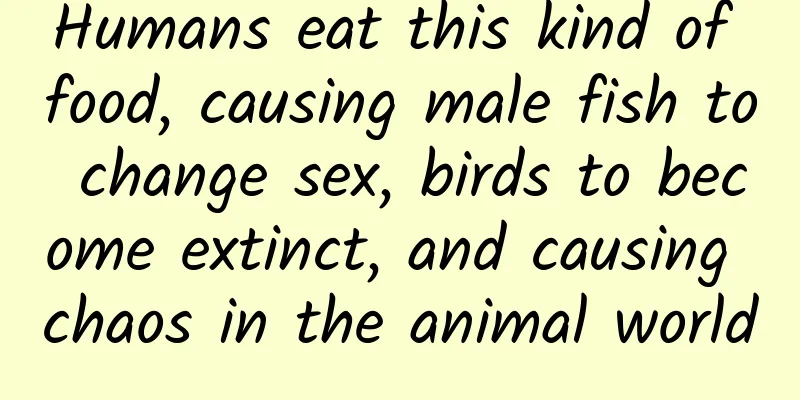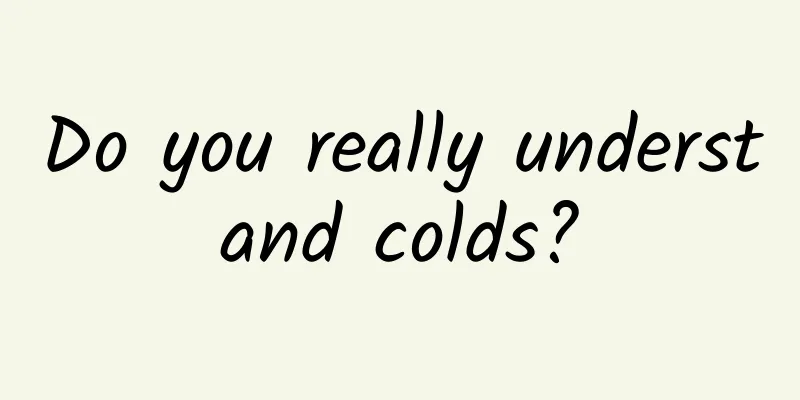Humans eat this kind of food, causing male fish to change sex, birds to become extinct, and causing chaos in the animal world

|
In recent years, a mysterious phenomenon has been spreading in the animal world, and you are increasingly likely to encounter the following slightly "weird" scenes: The brown trout in the river became numb and sluggish . They gathered in groups below the sewage outlet, waiting like crazy for the "rain from heaven"; When encountering a predator, the mosquito fish should stay still and hide itself in the environment to save its life. However, some mosquito fish jump around excitedly when they see their natural enemies , and then they are eaten instantly... Brown trout: mainly lives in rivers, but can also adapt to brackish water and seawater | Source: Wikipedia In fact, the culprits of these abnormal behaviors are all drugs that humans often use: the numbness and sluggishness of brown trout are caused by the influence of neuroleptics in the sewers; the mosquito fish "blindly" show off without caring about their own safety because the water contains the active ingredient of the antidepressant "fluoxetine". Mosquito fish: An adult female fish can eat 100 mosquito larvae a day | Source: LA County West In June, several researchers jointly published an article in the journal Nature Sustainability, pointing out that drug waste generated by the modern pharmaceutical industry has a serious impact on wildlife after flowing into the natural world. Drugs that can save human lives at critical moments have become a threat to animals. In addition to the impact on individual animals, pharmaceutical waste sometimes endangers the reproduction and survival of entire animal populations. In the UK, researchers found that female starlings who accidentally ingested antidepressant drugs became less attractive to the opposite sex during mating season. Worse still, compared with normal female starlings, those affected by the drug were more likely to be chased and attacked by male birds, which was quite miserable. Starling is a general term for a type of bird, which includes about 31 genera and 115 species of birds | Source: Wikipedia Tim Falce In Canada, after researchers added contraceptive ingredients to an artificial lake, they found that male guì began to produce yolk protein and even early eggs. The male fish changed into female fish, and the entire population could not reproduce and continue. In less than a few years, almost all the guì in the lake disappeared. Bighead carp: Brothers become sisters, who can bear it? | Source: Situ Biosciences So how do these active pharmaceutical ingredients enter nature? There are mainly the following ways: First, during the drug production process, some raw materials are not properly treated and are discharged into the nature as sewage; second, when we take medicine, not all medicines are completely decomposed and absorbed in the body , so these drug ingredients will flow into the external environment with human excrement; third, carelessly discarding unused medicines may also pose a threat to wild animals. "Active pharmaceutical ingredients can be detected in waterways around the world, even in aquatic animals that we eat," Michael Bertram, one of the co-authors of the article, told the media. A 2022 study tested rivers in 104 countries and found a total of 61 pharmaceutical ingredients , of which 43.5% of the sampling points had at least one active pharmaceutical ingredient exceeding safety standards. Bertram is an assistant professor at the Department of Wildlife, Fish and Environment at the Swedish University of Agricultural Sciences | Source: X.com Bertram warned that drugs that serve human production needs may also bring disaster to some species. The most classic example is the "Indian vulture crisis" at the turn of the century. In India, cows are sacred animals, so locals rarely kill cows for meat. Instead, they let them die naturally and then let vultures eat their carcasses. Since the 1990s, Indian cattle farmers have begun to use a large-scale anti-inflammatory drug called "diclofenac" to treat cattle. A few years later, Indians suddenly discovered that the vultures that were previously omnipresent seemed to have disappeared in an instant . It was not until 2003 that scientists found out that it was diclofenac that killed the vultures. It turns out that diclofenac can cause kidney failure and subsequent death in vultures. In order to relieve the pain of old cattle, Indians feed them diclofenac. The diclofenac remains in the cattle carcasses and is eaten by vultures, thus taking the lives of the big birds. Between 1992 and 2007, the number of vultures in India fell by 97% , and the number of one species, the white-backed vulture, fell by 99.7% , pushing it to the brink of extinction. After the vultures died, the cattle carcasses became food for wild dogs, which led to an increase of at least 5 million wild dogs in India during the same period, indirectly causing 47,000 deaths from rabies. In 2006, the Indian government, aware of the seriousness of the problem, stopped the use of diclofenac and recommended meloxicam and other drugs that were harmless to vultures. Only then did the ecological environment begin to gradually improve. Image source: Pharmaceutical Technology Bertram and other scientists hope that these historical events can serve as a wake-up call for humanity, especially in today's context - when climate change, habitat destruction and overhunting have already seriously threatened ecological diversity, do not let pharmaceutical waste become the "last straw that breaks the camel's back." They pointed out that to solve the problem of pharmaceutical waste, the pharmaceutical industry should reform and optimize its production processes, such as developing drugs that are easier to decompose after use . In addition, wastewater treatment plants should also add barriers to prevent active pharmaceutical ingredients from entering the natural world. Putting expired medicines into hazardous waste bins is something we can do. | Source: Jord AB “While we acknowledge that access to medicines remains a critical priority, pharmaceutical manufacturers, scientists and policymakers should be aware of the threats that active pharmaceutical ingredients pose to the natural environment and prioritize the production of green medicines made from sustainable molecules to prevent further environmental damage.” References [1]https://www.theguardian.com/environment/article/2024/jun/06/drug-pollution-wildlife-threat-aoe [2]https://journals.biologists.com/jeb/article/224/13/jeb242145/270755/Methamphetamine-pollution-elicits-addiction-in [3]https://www.sciencedirect.com/science/article/abs/pii/S0269749116308843 [4]https://www.york.ac.uk/news-and-events/news/2018/research/male-birds-sing-less-to-females-on-antidepressants/ [5] https://pubmed.ncbi.nlm.nih.gov/17517636/ [6] https://en.wikipedia.org/wiki/Indian_vulture_crisis Planning and production Source: Bring Science Home (id: steamforkids) Author: Liu Liuqi Editor: Wang Mengru Proofread by Xu Lailinlin |
Recommend
How does Pinduoduo achieve user growth?
Since 2017, remarks about the arrival of the ceil...
PPTV A three-year medical history of an "anemia" patient
There is a company that suffers from anemia. They...
Brand Pyramid: A Basic Path to Building a Brand
Written at the beginning: How to build a brand? T...
Stop cleaning up "zombie fans" WeChat official: This is a scam and is extremely harmful
You may have hundreds or even thousands of WeChat...
How did Xiaomi's ecological chain go astray and then get out of control?
Lei Jun, also known as "Lei Busi", has ...
Forward to the elders! Here are all the vaccination issues that the elderly are concerned about.
Source: China CDC News...
Why do pandas love bamboo? A "symbiotic partner" hidden in their bodies!
(All pictures in this issue are from the copyrigh...
Silicon Valley Growth Hacker Practical Manual!
This article is from the Silicon Valley Growth Ha...
How to find the best selling point in 15 minutes? This is what the boss thinks...
Have you ever had this experience , your boss cal...
Longer term trends of the top 10 programming languages ranking (1989-2014)
IOBE has just released the November programming l...
Apple to launch Chinese version of operating system at the end of November
I just received a piece of news that will make Ap...
App paid promotion, five factors that affect user registration conversion rate
With the development of mobile Internet, the numb...
What are the effects and functions of dog meat? Who are the people who should avoid eating dog meat?
Dog meat is one of the most nutritious meats. The...
Changsha tea tasting service, tea takeaway studio, high-end audition recommended here
185-6916-1745 Micro.Q Synchronization The masseus...









